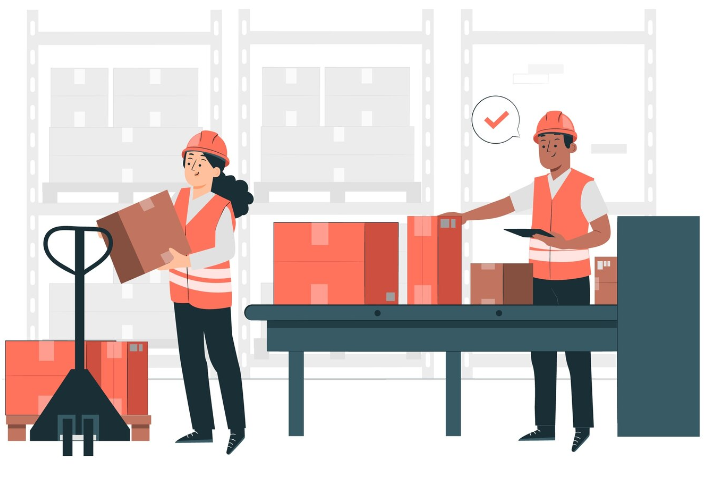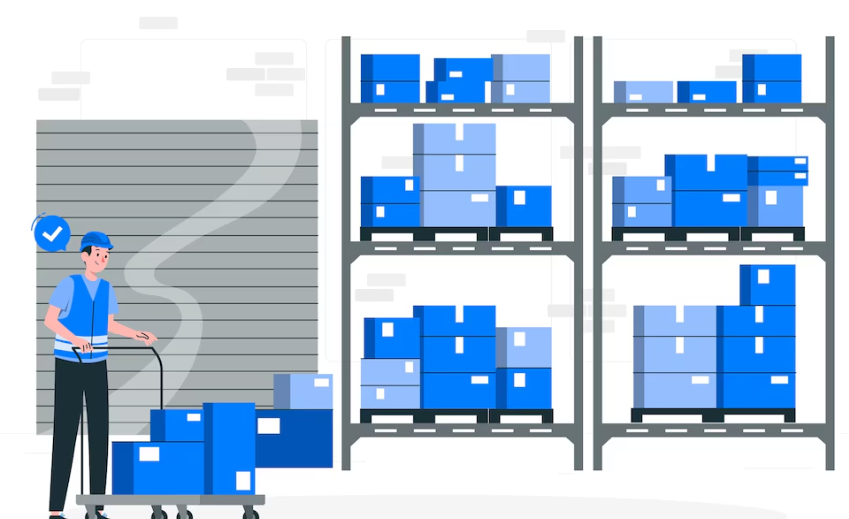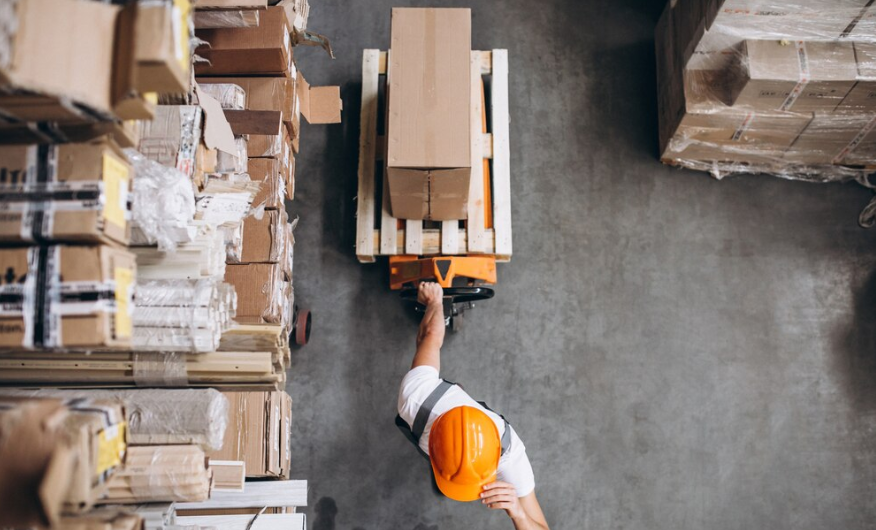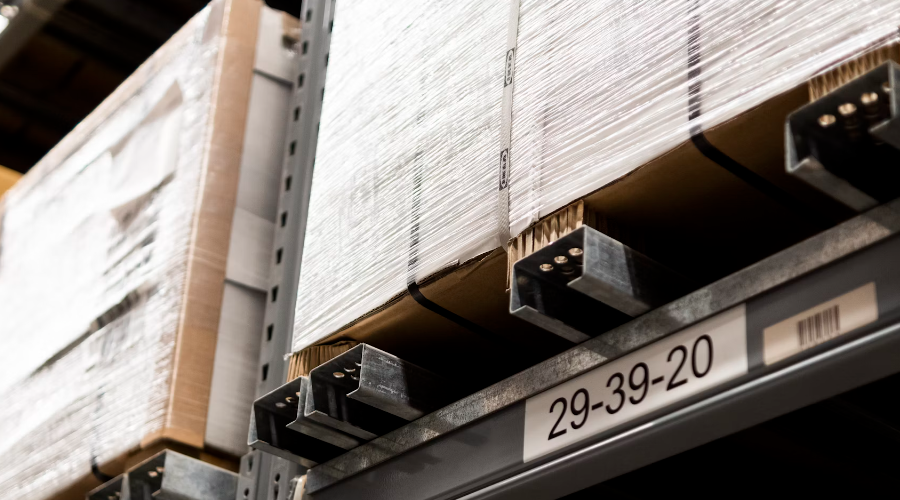Table of Contents
Get Custom eCommerce Fulfillment Service
Book a Meeting
How to Fulfill Your eCommerce Orders: Guide to Self-Fulfillment
Time: Aug 15,2025 Author: SFC Source: www.sendfromchina.com
In 2025, global e-commerce sales are surging toward the $7 trillion mark—making efficient and reliable order fulfillment more essential than ever. At the heart of logistics strategies lies a pivotal question: should you continue managing fulfillment in-house or partner with a 3PL? Self-fulfillment—where your team handles everything from inventory receiving to shipping and returns—gives you full control and customized brand experiences. Yet, as your business grows, so do the hidden costs, effort, and scaling challenges of DIY fulfillment.
1. What Is Self-Fulfillment
At its core, self-fulfillment (also known as in-house fulfillment or DIY fulfillment) is when your business handles the entire order journey—from receiving inventory, picking and packing, to shipping orders and managing returns—within your own facility, whether that's a home office, warehouse, or shared space.You control every step:
- Inventory reception and storage
- Order picking, packing, labeling
- Shipping via carriers you negotiate with
- Managing returns and customer support
It's hands-on, personalized, and gives you total visibility over operations—but all the responsibility, too.
2. Why Self-Fulfillment Still Matters in the 3PL Era
In an age where 3PLs (third-party logistics providers) are often hailed as the plug-and-play solution for scale, self-fulfillment continues to wield relevance—and even advantage—for many e-commerce brands. Here's why:
Absolute Control Over Your Brand Experience
Self-fulfillment puts you firmly in the driver’s seat. You own every touchpoint—from packaging to fulfillment timing, from personal inserts to handwritten notes. This level of control is hard to replicate via most 3PL providers.“In house fulfilment … gives us flexibility and quality control … custom bundle products … get them to market super quick.”
The emphasis on personalization fosters stronger customer relationships, especially for niche or fast-evolving products.
“Even at 3PL’s that would consider accommodating customization … they would charge you for that added work and variance since that disrupts their ideal flow and profitability.”
Lean Startup-Friendly Cash Flow
For emerging brands, avoiding hefty contracts, fulfillment fees, or long-term warehousing commitments is essential. Self-fulfillment keeps costs variable and transparent.As Wonolo notes, self-fulfillment can boost cash flow—particularly for low-margin operations that can’t absorb third-party logistics fees:
“Self-fulfillment … can offer cost savings, particularly for small to medium-sized businesses.”
Rapid Agility and Adaptability
When you're fulfilling orders in-house, pivots are smoother and faster. Launching new products, experimenting with bundles or promotional inserts—everything happens with fewer gatekeepers.Startups often value this:
“Self fulfill until it becomes an absolute hindrance to your growth.”
It allows you to maintain relentless innovation without waiting on external operational cycles.
Early-Stage Scalability Without Overhead
For manageable volumes, self-fulfillment circumvents the overhead of leasing warehouse space, hiring staff, or integrating complex software.From SPExpress:
“It works well if your key consumers are nearby, the logistics are manageable, and the shipping costs are low, particularly when starting out or with low order numbers.”
And as 3P-Logistics UK frames it:
“In the majority of cases, this is how most brands start out. When order volumes are still relatively small, it is easy to get up and running and is much more cost-effective.”
Streamlined Execution Without Over-Engineering
Adding more layers—spaces, contractors, complex integrations—can slow you down. Self-fulfillment keeps structure light and execution pure.Cart.com emphasizes this benefit:
“It’s straightforward for young retailers: … easier to handle fulfillment yourself.”
Superior Visibility and Quality Assurance
When you’re hands-on, discrepancies, special-handling needs, or irregular SKUs can be addressed instantly—with less risk of miscommunication.As Locad outlines:
“Self-fulfillment offers … greater control and visibility over the entire fulfillment process, allowing for improved quality assurance and customer service.”
3. What Are the Pros and Cons of Self-Fulfillment
Self-fulfillment empowers eCommerce brands with total autonomy, but it also brings its own set of demands and limitations. Here's a nuanced breakdown pulling from industry sources and candid experiences:Pros of Self-Fulfillment

Complete Control Over Every Detail
Maintaining in-house fulfillment gives you direct command over how inventory is stored, picked, packed, and shipped. You can tailor branding, audits, and quality checks as needed, at any time.Rich Customization and Brand Experience
Whether you're crafting handcrafted packaging, attaching handwritten notes, or curating gift bundles, self-fulfillment enables that tailored “wow” moment for customers. Around 75% of merchants who emphasize branded packaging say it significantly enhances the unboxing experience.Flexible, Lean Startup-Friendly Setup
For early-stage brands, DIY fulfillment can kick off swiftly with minimal investment—often starting with a garage, office, or spare room.Direct Inventory Oversight & Responsiveness
You’re always one step away from your stock. Need to fix a picking error, test a new promotional insert, or swap packaging ideas? You can react in real-time—no third-party permissions required.Potential Cost Savings on Larger Scales
While some argue that in-house fulfillment becomes costlier as you scale, efficiently managed operations—with optimized workflows and bulk shipping rates—can yield savings over time.Cons of Self-Fulfillment

Time-Consuming and Management-Heavy
Once you hit volume, fulfillment becomes a full-time job. Every package, return, and shipping label adds complexity, especially without automation or support.Rising Costs: What You See Isn’t All
DIY operations can accrue significant costs: leasing or maintaining warehouse space, sourcing materials, investing in equipment, subscribing to software, and perhaps hiring help. These cumulative expenses can outpace 3PL efficiencies.Scaling Challenges
Expanding fulfillment capacity isn’t as simple as turning a dial—it may require more space, labor, systems, or equipment. Scaling a DIY operation often involves steep incremental decisions.Geographic Constraints
Operating from a single location can limit reach. Shipping long-distance or international orders becomes costlier and slower without multiple distribution points.Prone to Human Error
With increased volume comes the risk of mistakes—incorrect items shipped, inaccurate labels, misplaced inventory. Without structured systems, these errors can erode customer trust.4. How to Fulfill Your Orders: Step-by-Step
Self-fulfillment may sound simple—pick, pack, and ship—but doing it properly is the difference between delighting customers and bottlenecking your growth. Here's a clear, step-by-step framework based on expert sources and real-world practice:
Step 1: Receiving & Storing Inventory
- Receive inventory from your supplier or manufacturer—whether via air, sea, or rail. On arrival, check quantities against your purchase order, inspect product quality, and flag any damage.- Store items efficiently. Whether you’re using shelves, bins, pallets, or drawer units at home or in a small warehouse, set up zones to speed locating. Group SKUs by size, turnover rate, or type—this improves picking speed and accuracy.
Step 2: Processing the Order
- Receive the order through your e-commerce platform or order management system (OMS). Confirm payment, customer details, and shipping address before proceeding.- Validate stock availability. Make sure the requested items are in stock and allocated for this order, especially in high-demand environments.
Step 3: Picking the Items
- Use organized pick lists, digital or printed, to guide selection.- Adopt picking strategies to save time:
Piece picking—choosing individual items per order.
Batch picking—gathering items for multiple orders simultaneously.
Zone or wave picking—dividing picking tasks by sections or time windows.
Step 4: Packing
- Choose the right packaging for protection and brand impact—boxes, bubble mailers, inserts, branded tissue paper, cushioning materials.- Ensure accuracy and presentation—include the correct items, packing slips, any promotional materials, and securely seal the package.
Step 5: Labeling & Shipping
- Print accurate shipping labels with legible formatting.- Select the right carrier based on rates and service commitments—USPS, FedEx, DHL, local couriers, etc.
- Arrange scheduled pickups or drop-offs—especially important as volume increases to avoid time lost at post offices.
Step 6: Tracking
- Share tracking info with customers promptly so they can monitor deliveries and feel assured. This reduces “Where’s my order?” inquiries.- Monitor for delays or issues, and be ready to communicate proactively to maintain trust.
Step 7: Handling Returns & Reverse Logistics
- Designate a dedicated returns zone for incoming goods.- Inspect each return—assess condition, restock sellable items, or process refunds/replacements as needed.
5. Self-Fulfillment vs. 3PL Fulfillment
Deciding between self-fulfillment and partnering with a third-party logistics (3PL) provider is savvy—it can make or break your operations, customer satisfaction, and margins. Here's a breakdown of both models, weaving in data-backed comparisons and real-world wisdom.Self-Fulfillment: DIY, Hands-On Control
- Complete Process Control: When you manage your own fulfillment, you oversee everything—from picking and packing to packaging design and quality inspections. This control enables unique touches and brand consistency that 3PLs may not replicate.- Ideal for Small Scale or Niche Operations: For startups or micro-brands, self-fulfillment is budget-friendly with minimal overhead. No third-party fees. Launch fast with your belongings and often a small space.
- Hands-On Quality and Flexibility: You can adapt swiftly—be it personalized packaging, surprise inserts, or special bundles. The ability to tweak processes instantly remains a strong version of brand guardianship.
3PL Fulfillment: Efficiency, Scale, Expertise
- Operational Scalability: 3PLs are built for scaling. With multiple warehouses and flexible infrastructure, they can absorb surges (e.g., holiday seasons or rapid growth) smoothly.- Cost Efficiency & Reduced Overheads: Outsourcing fulfillment lifts the burden of warehousing, staffing, and technological infrastructure costs. You pay only for what you use—turning fixed expenses into variable ones.
- Networked Reach & Faster Delivery: With distribution centers near key markets, 3PLs offer faster transit times and optimized shipping routes. Coupled with bulk shipping discounts, this translates into real savings.
- Advanced Tech & Inventory Management: Many 3PLs integrate with e-commerce systems, offering real-time inventory sync, WMS/TMS capabilities, and tools for automation. This positions them as tech-forward partners for efficient workflows.
- Focus on Growth, Not Logistics: Stepping out of logistics duties lets you concentrate on marketing, product innovation, and customer engagement, strategically positioning your operations for growth.
Comparison Table
Criteria |
Self-Fulfillment | 3PL Fulfillment |
|---|---|---|
| Control | Full control over branding, quality, personalization |
Less direct oversight, but some support for branded solutions |
| Costs | Low initial setup; hidden costs included |
Variable costs; potential volume discounts, but watch fee structure |
| Scalability | Limited by space, staffing, time | Easily scales with business growth and seasonal peaks |
| Technology | Manual or small-scale tools | Advanced systems, integrations, real-time inventory tracking |
Time Investment |
Time-intensive, operator-dependent | Frees up time for strategic business functions |
Outreach & Reach |
Local or slow shipping; limited geography | Broad, optimized distribution and faster delivery |
| Risks | Errors, fatigue, storage limitations | Fee complexity, communication issues, integration risks |
6. Cost of Self-Fulfillment
Managing your own order fulfillment can seem budget-friendly at first—but the real costs run deeper when you break them down across space, labor, and overhead.
Facility & Space Overhead
- Warehousing or workspace rent: Warehouse leases in the U.S. typically range from $5 to $30 per square foot annually. If you're using a home garage or shared space, costs may seem minimal—but as volumes grow, spatial constraints push you toward renting, with rent and associated utilities adding up fast.Equipment & Tech Investment
- Hardware and infrastructure: Essentials like shelving, forklifts, packing stations, scales, printers, and scanners can run $10,000 to $100,000+, depending on scale.- Software and systems: Expect to pay between $200 to $1,000 per month for inventory tools or SaaS order management systems—enterprise options cost significantly more.
Labor & Staffing
- Warehouse operators: Wages hover between $15–$25 per hour, with managers or supervisors earning well into six figures annually—for larger setups, expect to budget $100,000+ per manager role.- Training time and quality control: Onboarding your team and maintaining smooth operations require intentional investment in training and oversight.
Packaging & Consumables
- Whether you’re using basic boxes or branded, padded mailers, costs for each packaged order typically range from $1 to $5, varying based on product fragility or branding details.- You’ll also need to stock labels, tape, bubble wrap, packing peanuts, and inserts—these consumables sneak into budgets month over month, often overlooked.
Shipping Costs—A Major Piece of the Puzzle
- Shipping is the largest expense — accounting for roughly 88% of total fulfillment costs in many e-commerce operations.- Small businesses often lack the volume to negotiate lower rates, and costs range widely—domestic shipping averages $3 to $20 per package, with international and expedited delivery typically much higher.
- Vehicle wear, fuel, and pickup fees can further inflate self-fulfillment shipping expenses.
Fluctuating Demand: Hidden Volatility Costs
- Space, materials, and labor demand fluctuate with seasons or promotions. If you rent space for peak months but stay idle during slower periods, you're still paying for inefficiency.- Labor costs skyrocket when scaling up at short notice, and per-order costs can rise sharply during slowdowns. For instance, one seller’s cost per order jumped 33% when monthly order volume dipped.
Returns & Reverse Logistics
- Managing returns involves time and space—not just for inspecting and repacking, but also for managing refunds or restocking. Without defined processes, returns can become a logistics drain.Agglomerated Average Cost per Order
- Industry benchmarks peg the cost to fulfill a single e-commerce order at around $8.50, covering picking, packing, shipping, and handling.- Without scale or streamlined operations, these costs can quickly erode margin, especially as volumes grow or customer expectations for speed rise.
7. When to Switch to 3PL: The Tipping Point
Transitioning from self-fulfillment to a third-party logistics (3PL) provider is a significant decision that can impact your business's scalability, efficiency, and customer satisfaction. Recognizing the tipping point is crucial to ensure a smooth transition and continued growth.Key Indicators It's Time to Switch

Order Volume Surpasses Capacity
As your order volume increases, your current fulfillment setup may struggle to keep up. A common recommendation is to consider a 3PL when your facility reaches 75% to 90% of its capacity. This ensures you have enough space and resources to handle peak demands without compromising service quality.Storage Space Limitations
Limited warehouse space can hinder your ability to store inventory efficiently, leading to stockouts or overstocking. 3PL providers offer scalable storage solutions that can adapt to your business's growth.Increasing Error Rates
Manual fulfillment processes are prone to errors. If you're experiencing a rise in shipping mistakes, mispicks, or inventory discrepancies, it's a sign that your current system may not be sustainable as order volumes grow.Geographic Limitations
Self-fulfillment often involves shipping from a single location, which can lead to longer delivery times and higher shipping costs, especially for customers located far from your facility. 3PL providers with multiple distribution centers can offer faster and more cost-effective shipping options.Technology Investment Hurdles
Implementing advanced fulfillment technologies like warehouse management systems (WMS) and automation tools requires significant investment. 3PL providers have these technologies in place, allowing you to leverage their infrastructure without the upfront costs.Customer Expectations Outpace Capabilities
Modern consumers expect fast, accurate, and transparent delivery experiences. If your current fulfillment process struggles to meet these expectations, partnering with a 3PL can help enhance customer satisfaction through improved efficiency and reliability.Strategies for a Smooth Transition
- Evaluate Potential 3PL Partners: Assess providers based on their scalability, technology capabilities, industry experience, and cultural fit with your business.- Standardize Product Data: Ensure all products have consistent SKUs, descriptions, dimensions, and weights to facilitate accurate processing.
- Document Special Requirements: Provide comprehensive instructions for products that need particular handling, packaging, or kitting.
- Plan for Seasonal Fluctuations: Choose a 3PL that can scale operations to handle peak seasons and adjust during slower periods.
- Communicate Expectations Clearly: Establish clear communication channels and set expectations regarding performance metrics, service levels, and reporting.
8. Conclusion
Self-fulfillment—managing your own order picking, packing, shipping, inventory, and returns—offers control, personalization, and low startup costs, especially suited for small or artisanal brands. But it comes with scaling challenges, hidden costs, and labor intensity.Meanwhile, 3PLs offer efficiency, technology, scalability, and geographic speed—but at the cost of some control and added fees. The strategic move? Start in-house if it aligns with your volume and brand experience; scale to 3PL when orders, customer expectations, or logistics complexity demand it.
9. FAQs
Q1: What’s the main benefit of self-fulfillment?
A1: Total control over every detail—from packaging to shipping timing—without outsourcing.Q2: At what order volume should I consider switching to a 3PL?
A2: Generally when you exceed ~1,000 orders/month or face holiday peaks—it becomes inefficient to stay DIY.Q3: Can I start in-house and move to 3PL gradually?
A3: Yes! Many brands start DIY and transition as they scale or need faster delivery and logistics support.Q4: Does self-fulfillment save money long-term?
A4: It’s cheaper early on, but long-term costs (labor, space, materials) can exceed 3PL efficiencies.Q5: How can I keep my fulfillment personalized if I switch to 3PL?
A5: Choose a 3PL that supports custom packaging, brand inserts, and unboxing experience to maintain your brand’s personal touch. Post Views:706
Post Views:706
Copyright statement: The copyright of this article belongs to the original author. Please indicate the source for reprinting.
Previous Post
Guide to Kitting and Assembly for eCommerce
Next Post
TAGS
Hot Research
Recent News
Get Custom eCommerce Fulfillment Service
Book a Meeting
Get a Custom China Fulfillment Solution with FREE Storage for 30 Days
 Want to know about our services, fees or receive a custom quote?
Want to know about our services, fees or receive a custom quote?
 Please fill out the form on the right and we will get back to you within a business day.
Please fill out the form on the right and we will get back to you within a business day.
 The more information you provide, the better our initial response
will be.
The more information you provide, the better our initial response
will be.





 TAGS:
TAGS: